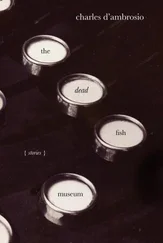Now auto shop’s dead, and probably hipsters study art, anyway, but back in the day a certain, perhaps limited manhood made its way into public by lovingly (and literally) deconstructing one of the culture’s main givens — the car — and metamorphosing it with saws and torches, complex paints and layers of lacquer, until it shed its dull utility and became art — primarily, as Wolfe says, sculpture. (Roth cast the bodies of his bizarro cars with plaster molds.) It’s no accident that this kind of revamping flourishes in macho cultures, since it’s so openly about the male need of outlets for sensitivity that aren’t permissible and are, in fact, studiously removed from spectacles like football. In an essay quite similar in gist to Wolfe’s, Dave Hickey argues that hot-rodding is about dissent, which I think is partially true. Hispanics in LA, for example, often favor hopped-up trucks, in part to recoup and then triumph over the denigrations of migrant labor life, spent riding around dusty fields, packed in the backs of pickups like loads of produce. The very qualities that make a truck functional for farmwork — beefy suspension, extra clearance, etc. — are completely subverted in a lowrider, which couldn’t handle even the slightest rut without high-centering or fatally bashing the rocker panels. Lowriders are so outrageously spiffy and cool — a new dandyism — they look like they’ve never done a day of work in their lives.
And just so, Dave Santos’s bikes are ridiculous from the standpoint of utility. Everything an elite rider might want for the Tour de France — lightness, strength, balance, low resistance — is out the window once Santos fires up his torch and begins to build a mutant bike for his migratory trips to Mexico: lengthening the seat tubes by a couple of feet, raising the bottom brackets, setting the chain rings and cranks on a vertical axis, chopping the forks, making the saddles cushy with wads of foam and a wrap of duct tape, improvising fairings of plaster and fabric. They aren’t conventionally beautiful, these bikes, and they don’t even seem roadworthy — they’re circus bikes for goofy, toppling clowns — but in their strange, abstracted state they’re definitely objects, maybe sculptures. Everything Dave Santos does at Biosquat is an attempt to render a vivid interior external, and as such, his bikes are primarily an index to the visionary mind of the maker. But the central problem with any visionary experience, plaguing all seers, is one of verification. I’m not talking about vision as an eyeball thing ( Did you see that? ), but vision as imagination, intuition, revelation ( Did you experience that? ), where issues of authenticity, truth, and validity ( Are you nuts? ) become hugely problematic — for example, when you’re talking about winged bikes, fitted with feathers of old, still utile trash, that might one day carry hippies to the stratosphere.
At one point Santos said he was fascinated by “those little golden ages that are gone before you know it.” But he also said: “That’s where I’m a little pessimistic, because sometimes cultures reach a peak and they don’t just keep on going forever, you know — then there’s ruins, and thousands of years, and, you know, after ancient Greece, they had a lot of downtime, the action went somewhere else. So there’s a lot of sadness, a lot of missed opportunities, a lot of mistakes.” Biosquat aspires to get outside this story. It’s an attempt at creating some kind of suspension, anyway — a world of signs and wonders, of marvels and revelations, of continuous amazement. How? Every object at Biosquat is tinkered with until it’s an original, toyed with until it resembles nothing else. Even Santos’s fondness for neologisms is a way of wrenching old words into something new and unique. I’d never seen a toothbrush on a chopstick — it’s so Dada and sensible at the same time — nor had I taken a shit on a trike. Each object — like Big Daddy Roth’s hot rods or the Hispanic boys’ chopped and channeled trucks — is an attempt to seize life at a moment of glory, to embody an essence and hold it, stilling the ephemeral, apotheosizing what would otherwise pass, as all things pass. The mutant bikes, the bamboo beds, the gnat goggles and the Chicano robots and the corrugated plastic domes are all singular — freaky, a one-off, an aberrance, a whole world of exceptions. All of it exists somewhere beyond sadness or mistakes or missed opportunities, because, transformed, there’s nothing to compare it to. It’s meant to speak to you in the language of the burning bush, it’s supposed to be a walk on water, it’s all truth of another order, as William James says, like the coin Christ pulls from the mouth of the fish to pay the temple tax. These are called miracles, of course, and they break a lot of natural laws, but as transformations, utterly singular, beyond argument, they too are meant to convince you that the kingdom has already arrived, here on Earth. 

1 My questions and exclamations — every noise I made — appear here within brackets.
The intent of a façade is exoteric but there are obvious problems with that. While in St. Petersburg, for instance, I stayed for several days at the Moscow Hotel. That particular exterior does the work of a façade, presenting a warren of windows so relentlessly uniform the eye is baffled and ultimately rejected; from a distance, you can’t quite locate the entrance. But if, from outside, you can’t find a way in, from inside, especially walking the hallways, you can’t imagine a way out. The interior space is made of incredibly long, horrid corridors lined on either side with black doors, like answers to a question you’d long ago forgotten. You feel exhausted, seeing such a dreary path ahead of you on the way to your room. You begin to feel the life behind any one of the black doors will do — any future, any destiny. Once inside, your room, it turns out, is only the imitation of something nice, an arrangement of resemblances.
And probably the most esoteric Russian encounter is with a woman seated inside a glass booth. You look through thick Plexiglas, you speak into a small vent or round hole, and the grim interior light from a low-watt lamp, the dull brown walls, the sense of the woman as someone seated at the bottom of a box, all of this seems to encourage her indifference, embolden it. Everything inside — the adding machine or cash register, the telephone, the woman’s lips — looks antiquated. You may want to exchange money or call a cab or simply make an inquiry, but you are clearly intruding on an isolation that’s sanctioned or bolstered, somehow, by an official boredom. What sense of desire or anticipation can you expect from a woman locked away like this, limited to such a small immobilizing space? It seems to be a matter of perfect indifference whether or not you have rubles to spend or the question you want to ask is ever answered. It’s like tricking a troll, hoping for passage. If you can consider a façade the blank face, then the woman inside the glass booth is the hardened heart, neither of them inclined to charm. Their efficacy comes from elsewhere. You can’t imagine the liberation of such a woman, from either her booth or her boredom, and the information you’re after is isolated too, like a dwindling, rationed commodity, lacking market efficiency and flow. In my limited experience, you never came away from one of these occult encounters with enough of what you were after. The arrangement is tightfisted, as though ideas and information weren’t meant to circulate, as if they could actually be contained inside what amounted to aquariums. You look into that glass booth long enough and what you begin to see, I imagine, is your own soul.
Читать дальше














